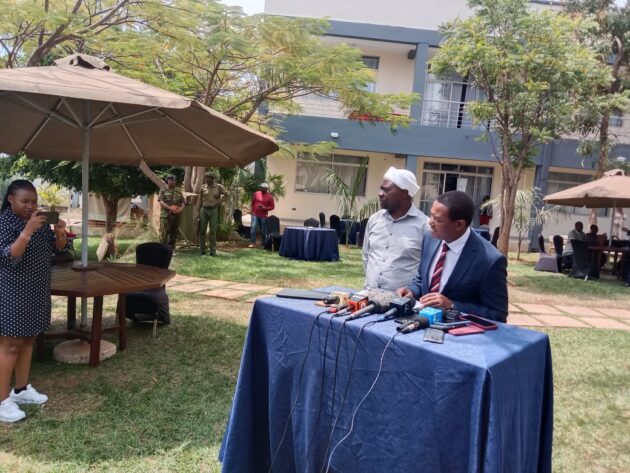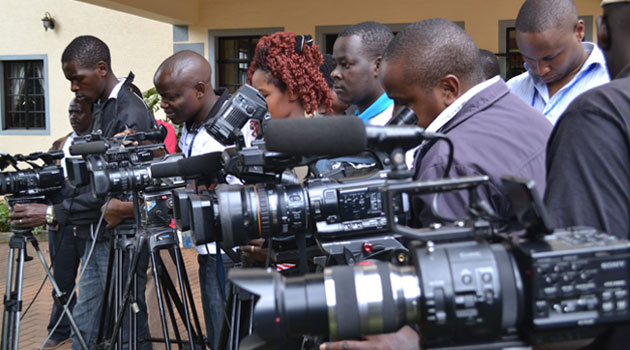Shan and Kayah States, Myanmar – The truck rocked violently as the driver attempted to manoeuvre the rough terrain of Shan State’s dirt roads.
As the wheels spun, trying to find traction, the Pa-O National Liberation Army (PNLA) soldiers inside exchanged glances, nervous about the battle to come, but composed and determined.
The platoon was part of a convoy of vehicles making its way towards a small village, high in the mountains, ahead of a new offensive against Myanmar’s armed forces and an armed group aligned with the military government that seized power in a coup in 2021.
Armed with AK-47s, M-16s, and rocket launchers, they planned to retake multiple outposts near Hopong Township in Shan State, in the east of the country.
“We cannot attack directly, we have to check the area first and then attack slowly,” a PLNA soldier named Kyaw Zin explained at a ridge a few kilometres away from the front line. Further to the north, a key road was under the control of the Myanmar military preventing vital resources from being funnelled to the PNLA and other armed resistance groups further south.
Amid the constant threat of weaponised drones and air strikes from military fighter jets, the PNLA said they expected the fight to last at least 30 days. As the sound of gunfire and mortar shelling ricocheted around the amber-coloured hills, the fighters said they were confident they would win.
The PNLA is riding the momentum of a series of victories for anticoup fighters in northern Shan State since the Three Brotherhood Alliance launched “Operation 1027” towards the end of last year. The coalition of three powerful ethnic armed organisations has taken control of hundreds of military outposts and dozens of towns in Shan and Rakhine States since the offensive began, and reinvigorated the campaign against the military in other parts of the country.
Fighting has also escalated in Kayah State (Karenni), just south of Shan State.
The Karenni National Defence Forces (KNDF) launched its own offensive on November 11, 2023, “Operation 1111”, aiming to take control of the state capital of Loikaw. About half the city, controlled by the military since the coup, is now in the hands of the Karenni resistance.
The KNDF has also taken control of Demoso, Mese and Ywar Thit as well as the strategically important township of Shadaw.
The battle for Shadaw
Commander Khu Reedu was the leader of the attack on Shadaw.
“We entered the town very quickly,” Khu Reedu said of the offensive in February. “Once we finished their outposts, we could move inside to the main camp fast. The battle finally ended at the golden pagoda in the middle of the town; this is where the last standing SAC troops all died.”
The Myanmar ruling military, which calls itself the State Administration Council (SAC), has been fighting an armed resistance since launching a vicious crackdown on the mass protests that followed its February 1, 2021 coup.
Khu Reedu is one of KNDF’s most fearsome fighters: although no taller or more muscular than the other men, his piercing eyes suggest an intense determination.
Reedu says he has led multiple attacks on Myanmar forces. Others say he has killed dozens of SAC soldiers.
Shadaw’s shattered buildings and burned-out landscape are testimony to the ferocity of the battle.
Even two weeks later, the bodies of the ruling military’s soldiers were out in the open and starting to decompose. The remaining buildings were pockmarked with bullet holes, while others had been destroyed by mortar shells and bombs.
Emptied of its population of roughly 7,000, the streets were eerily quiet.
The KNDF and Karenni Army, the armed wing of the Karenni National Progressive Party, which also operates in Kayah State, had been trying for about a month to push the military from two camps it had established on the hill above the town, which is close to Loikaw and the Thai border and connects to Southern Shan, another area of crucial importance for the resistance.
Once the camps were overwhelmed, the military retreated to positions in the middle of Shadaw and anti-coup fighters surrounded the town.
In the early hours of February 12, they launched their final assault. Over a period of about an hour, they fired mortars at the soldiers who had holed themselves up in Shadaw and targeted them with machine-gun fire.
The military, which has Russian fighter aircraft and continues to receive supplies of jet fuel despite calls for a boycott, began to bomb the area.
“All the villagers fled,” said Dave Eubank, the founder of Free Burma Rangers, a non-profit organisation of medics offering humanitarian assistance throughout Myanmar and beyond.
The people of Shadaw had taken refuge in a valley about 10km (6 miles) to the north of the town
“But even then, we were up in a hiding place with wounded villagers, and jets came in and tried to bomb us, tried to bomb the hiding place of the civilians,” he said.
“Even while we were treating them, we still got hit by 32 air strikes in two hours,” Eubank said.
At least 180 Myanmar military troops were killed in the offensive, while the Karenni resistance lost only nine soldiers, according to commander Khu Reedu.
The Free Burma Rangers say at least six civilians were killed – three mothers, and three children – while a further three were injured. The group documents the casualties at each location where they provide medical support.
The military spokesman did not reply to multiple calls for comment. Myanmar’s state media carries regular reports suggesting successes by anticoup forces are “fake” news.
“The KNDF and others being able to clear any significant [military] presence in so many parts of Karenni State is a major achievement,” said David Scott Mathieson, an independent analyst. “It offers opportunities to expand supply chains, for the war effort, but also humanitarian support and the potential for trade and livelihoods to assist in reconstruction.”
The military will ‘not go easily’
Despite the breakthroughs, other battles have been more challenging.
Civilians have often found themselves caught up in the fighting, including in Pasaung Township, where anticoup forces say attempts to free about 1,000 villagers have encountered a fierce response from the military.
“You couldn’t get all the people out of there, the Burma army was shooting at us, all around. Rifles, machine guns, M79s and mortars, everything,” said FBR’s Eubank.
According to the Free Burma Rangers, a few hundred civilians remain in Pasuang and are being used as “human shields”.
Those who escaped told FBR that they were threatened with death if they tried to leave. And as many were escaping, including some with fatal injuries, on March 1, the ruling military unleashed multiple air attacks and set many parts of the town on fire.
At an undisclosed location in northern Kayah State, a KNDF platoon was edging closer to its fight.
The sun was blistering. Plumes of red dust billowed up into the sky as the convoy’s wheels tore into the earth. A lone hawk flew above in the pale blue sky. Suddenly, one of the troops spotted what he thought was a military spy plane. The distinctive buzz of its engine started echoing through the valley.
The SAC aircraft, a small white propeller plane, was above the convoy, flying in circles dangerously close.
“Normally, after one of these spy planes is above, if they see us, they will send a fighter jet to bomb 20-30 minutes later,” Mi Reh, a KNDF soldier, said as the troops hid beneath some trees. Above them, the aircraft banked sharply to the left, as the SAC pilots tried to get a better visual on the location.
“Sometimes, these planes are capable of dropping 20 mortars onto us,” Mi Reh added, his eyes fixated on the sky above.
Experts say the military’s increasing use of air power is a sign of its desperation.
Increasingly unable to win on the battlefield, the ruling military sends Russian-made MiG 29 fighter jets or other aircraft to bomb its opponents wherever they believe they are operating. Although the bombings have killed KNDF troops in the years since the coup, such indiscriminate assaults often maim and kill civilians too, according to rights groups and experts.
“The real concern is that the SAC forces, while seriously diminished, are still stubbornly holding on in some areas, and they’re exacting a terrible toll on KNDF fighters and civilians through air strikes, artillery, and drone strikes (what the regime calls ‘drop bombs’),” Mathieson said.
Since 2021, a handful of fighter jets have crashed. The resistance claims they have shot down these planes – in January the Kachin Independence Army claimed to have shot down a military helicopter – but the ruling military has attributed the losses to mechanical faults. Whatever the cause, the military is losing planes, fuel and munitions, and being sapped of morale. In February, conscription was imposed to try and boost the military’s ranks.
“The SAC will not go easily but it’s important to reflect on how much territory, troops and bases they have lost in three years,” Mathieson said. “That is all down to the fighting spirit, collective spirit and ingenuity of the Karenni resistance who are winning precisely because they’re fighting a just war.”
Meanwhile, in Shan State, the PNLA platoon hunkered down for the night to the crack of small arms fire and repeated thumping of mortars. The PNLA said they had killed about a dozen ruling military troops over two weeks of clashes, but had also lost five of their own to drone strikes.
Despite the increasingly violent reality of life in Myanmar, many men and women remain focused on a cause they believe to be right – removing the military from power and restoring a civilian government.
“The SAC always tries to target us with air strikes, shelling and now many drones,” Khu Reedu, the KNDF commander, told Al Jazeera. “But it’s never going to work, these attacks are never going to stop us from freeing our country.”











